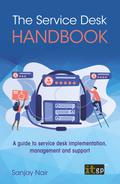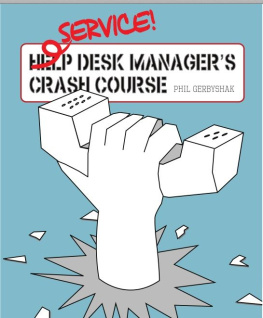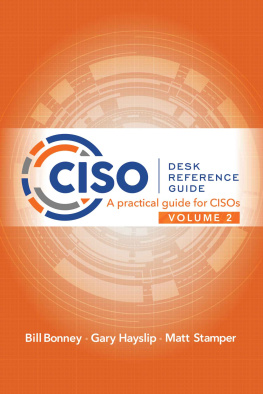So, why did I decide to write this book? The answer is that while there is tons of information on the various aspects of the service desk on the Internet, researching each topic and compiling the required content can take a considerable amount of time and effort.
I am hoping that the topics I cover in this book, along with the samples and templates, provide readers with a reference point for the setup and smooth running of service desk operations in any organisation, irrespective of its size or nature of business, without the hassles of searching for the basics on the boundless highway that is the Internet.
In an already agile world which places more importance on actual work done than comprehensive documentation, this book might seem a little out of place. However, I believe that good practices and related documents will always provide a firm foundation for consistent delivery of services.
ACKNOWLEDGEMENTS
To those who have this book in their hands, it will hopefully serve its purpose and help you (and your teams) become more organised and productive. But for me, it is more than that. This is the fulfilment of a dream, an item ticked off my bucket list, and for that I am forever grateful to the people mentioned below.
First and foremost, I would like to thank my dear friends at Keralite Engineers Association (Kuwait) for constantly encouraging and appreciating the articles that I wrote over the years. A handful of these friends have been with me throughout the years, proofreading my work, suggesting ways to improve it and egging me on to eventually get a book published.
A special mention must go to my former co-columnists at Rousing The Kop, a blog dedicated to Liverpool Football Club, who helped develop my passion for writing further.
I have keener eyes at home to thank as well, my family, for giving me honest and impartial feedback and making sure that I stay grounded at all times.
I would also like to thank David Barrow and Michael Walker for their time and effort in providing invaluable feedback to fine-tune the contents of this book.
Tons of gratitude goes out to Nicola Day, production editor at IT Governance Publishing Ltd, for guiding me through this journey and helping see my dream to fruition.
However, the biggest appreciations and obligations are reserved for service desk teams, past and present, that I have had the pleasure to be a part of. It is their contributions at work that motivated me to write this book. Their sincerity, dedication to the job at hand, and willingness to constantly learn and improve themselves will always be a source of inspiration to me.
CONTENTS
CHAPTER 1: WHAT IS A SERVICE DESK?
First and foremost, a service desk should be seen simply for what it is in the literal sense: a central location to go to when you need a service or someone to help you with things.
It is your one-stop destination for enquiries, requests and reporting issues. It is your first touchpoint for any service offered by a service provider. A service desk adds structure to proceedings, whether it is as the front face for the internal customers or by allowing the technical support units to focus on the task at hand, without the continuous hassle of having to deal directly with internal customers.
Human interactions can vary, from the extremely pleasant to the utterly frustrating and demoralising. A service desk team almost completely bears the brunt of disgruntled customers, without allowing their grievances to reach any of the underlying support teams. This is a very important function that is often overlooked, as it is seen simply as part of a service desk agents job and hence never appreciated enough.
You can have all the technical expertise and certifications in the world, but the ability to wake up each morning ready to go again in a service desk environment is by far one of the most underrated skills in the corporate sphere. Ultimately, a good service desk is the glue that binds customers and service providers.
Mission and vision statements
It always helps to have a mission statement and a vision statement for the service desk. These serve as a constant reminder to each team member of their goals and responsibilities as well as those of the organisation. A sample is shown below, which can be altered as needed.
Mission:














